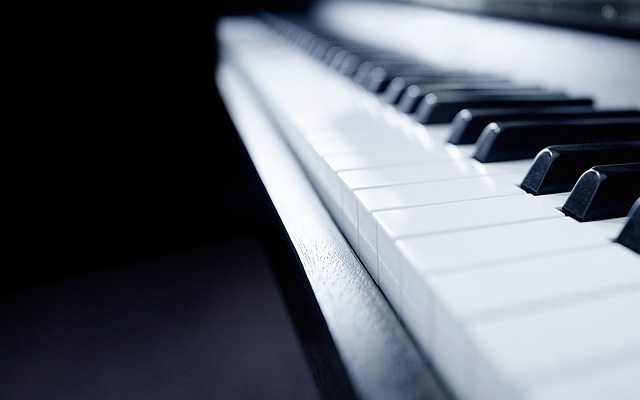It seems pretty easy to identify keys with key signatures when there aren’t any flats listed. It’s quite obvious that you’re in the key of C Major or by a lesser chance, A minor. But when you have a series of flats in the key signature of a piece of music, it can be quite daunting for a beginner or even an early intermediate piano student to instantly know what 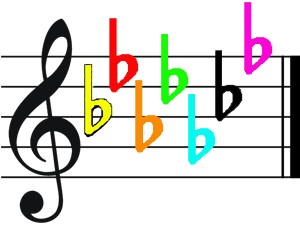 key a particular piece of music is in.
key a particular piece of music is in.
First, let me clarify something that you may or may not know. Key signatures have an order to them that never change. For example, if you have 2 flats in the key signature of a song, they will always be the same two flats no matter what. Even if the key of music is in a relative minor key, it makes no difference. Two flats in a key signature will always be B flat and E flat.
It’s the same with sharps in a key signature. If you have three sharps in a key signature, they will always be the same three every time: F sharp, C sharp, and G sharp.
The point is that there is no random sharps or flats in key signatures. They appear in a sequence and it is consistent without exception.
The reason for my explanation is that (and I hate to admit it) I once was not aware enough of key signatures to understand this concept. I thought sharps and flats in a key signature were random and could possibly be any of them in any order.
I’m very thankful I was wrong about that. That would make life very difficult for musicians and more complicated for beginning piano players.
I also want to mention that sharps and flats are never mixed together in a piece of music. If you watch enough Youtube tutorials, musicians will sometimes mix flats and sharps together as they’re calling out the notes of a chord. Not good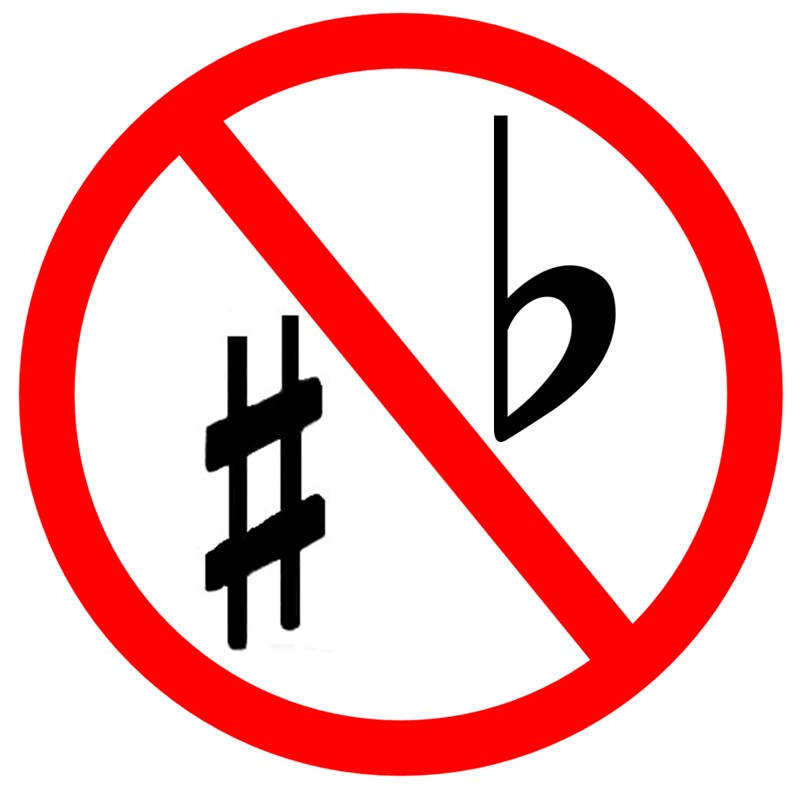 in my opinion, but if you have a solid understanding of key signatures, You’ll benefit from it and not be confused about the sharps or flats that are in the chords.
in my opinion, but if you have a solid understanding of key signatures, You’ll benefit from it and not be confused about the sharps or flats that are in the chords.
That’s what I want to share with you today. This article is about a shortcut to determine what key of music a song is in when you’re not familiar with key signatures enough to just look at them and instantly know by the number of flats.
As you may know, most professional musicians don’t use standard sheet music as much as they may use lead sheets. A lead sheet sheet is just the treble clef of a song with only the melody line and chord symbols. It will also have a key signature that will notate what key the song is in.
First of all, don’t be intimated by key signatures. There is a lot of aspiring piano players who play from lead sheets and only stay within the key of C Major for this reason.
In earlier posts, I covered the order of flats and sharps in the simplest way for you to learn them with a very colorful way in the spirit of Color Score. Go check it out if you’re not familiar with them.
Most piano students will memorize key signatures and their corresponding keys by rote but there’s a much better and easier way.
Here’s a shortcut to identifying the key of a song with key signatures when you have flats.
Let’s first start with one flat in the key signature.
Let me apologize to you first by telling you a fib. You will have to memorize the first key of music that has flats in it. But it’s very simple.
If you have only one flat in the key signature (which is B flat), you’ll be in the key of F Major. This is very simple and no student has ever demonstrated to me that they can’t do this.
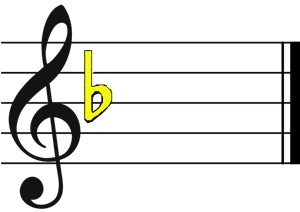
If you have two flats in the key signature, they’ll be B flat and E flat. If you didn’t know this without me telling you, read the earlier post on the order of flats.
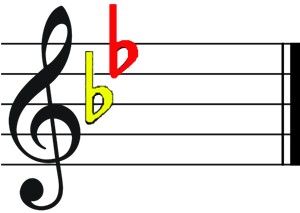
Now for the shortcut.
To find the key of a song, simply locate the flat next to the last flat listed in the key signature.
Here’s B flat and E flat in the key signature. As you can see, B flat is next to the last flat listed. So this means that with two flats in the key signature, you’re in the key of B flat.
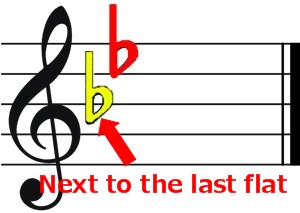
Here’s B flat, E flat and A flat.
The the flat next to the last flat listed is E flat which makes key of music E flat when you have three flats.
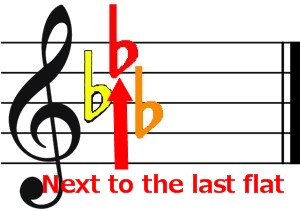
Now try it for yourself.
Here’s B flat, E flat, A flat and D flat. What key are you in with four flats?
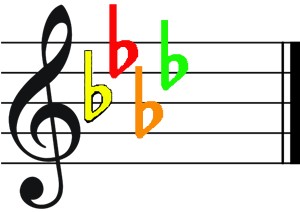
Absolutely correct! It’s A flat. It’s the flat right next to the very last flat listed which D flat.
What key are you in with five flats? B flat, E flat, A flat, D flat, and G flat.
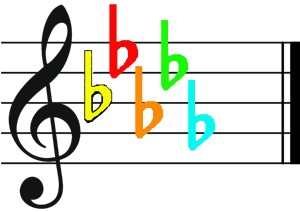
Absolutely correct! D flat.
It couldn’t be any simpler!
Here’s B flat, E flat, A flat, D flat, G flat, and C flat. What key are you in with these six flats?
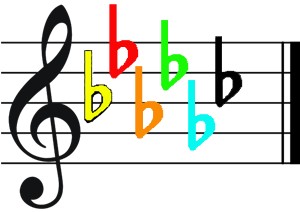
That’s right! G flat.
Ok, here’s the last Major key of music that you could be in with flats. B flat, E flat, A flat, D flat, G flat, C flat, and F flat.

If you said C flat, you’re right again!
Now, you may be wondering if you’ll have to identify what key a song is in by using this shortcut forever and without hesitation, the answer is no.
This is a just shortcut for you if you’re not familiar enough with key signatures to identify them instantly at first glance.
The more familiar you become playing in different keys of music, the less you’ll rely on using this shortcut. It will come instantly right when you see the key signature.
The great thing about this shortcut is that you can master it with just a little repetition in a very short time.

I want to send you a free instructional guide that has some very simple repetitions to help you learn your key signatures fast. Just click here and let me know where to send it.
It’s a free resource and my gift to you for reading this article.
Find out more about Color Score! The easiest way to learn to play the piano like a professional.
Until next time, Go Play!

